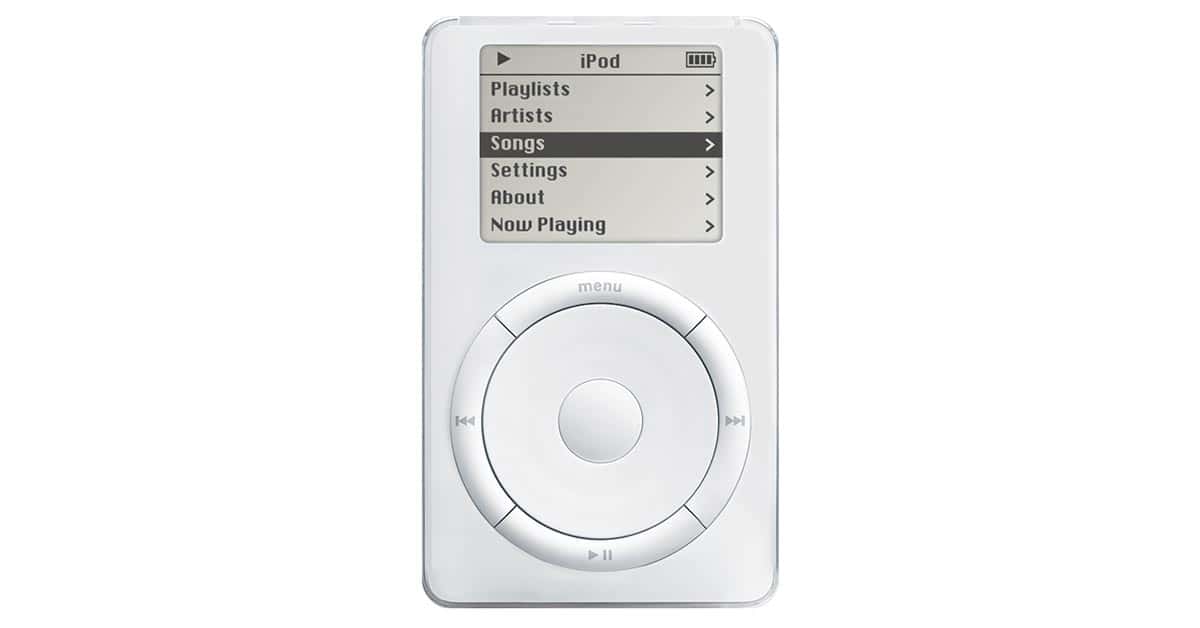On October 23, 2001, Steve Jobs unveiled the original iPod. The Economist reflected on how the device revolutionized both the music and tech industries.
The iPod’s wheel elegantly removed the scrolling problem. A tiny hard-drive built by Toshiba packed five gigabytes of memory (enough for 1,000 songs) into 1.8 inches (4.5cm), allowing the iPod to offer as much storage as any competitor in a smaller body. And the earlier launch of iTunes meant that every Apple computer had a programme dedicated to managing the device’s contents. Critics wondered whether ordinary music fans would fork out $399 (about $580 today) for such a strange contraption. By 2007 Apple had sold 120m of them, and soon launched the smaller Mini, the tiny Nano and the screenless Shuffle. The classic iPod gained a colour screen, then the ability to play videos, and finally a hard-drive of 160 gigabytes, which was more than most laptops had. Historians of Apple generally note that the iMac computer, which Jobs launched shortly after returning to the ailing company in 1997, revived its fortunes. But the iPod introduced most people to the firm’s aesthetic and technical brilliance. At its peak it accounted for 40% of Apple’s revenue.
Check It Out: Happy 18th Birthday iPod – the Gadget That Changed Music

We held off for a few months and got the 10GB model. It was absolutely wonderful. I spent a few evenings ripping our CD collection and storing the copies on the device. I used it at the office. I used it on the road. I used it all over. A succession of iPods followed culminating in a 4th gen iPod Touch. That was a great device. It proved to me that the awful squishy touch screens I had used on phones before were the anomaly. It made me confident enough to, eventually, go with an iPhone, then iPad, and the rst is history.